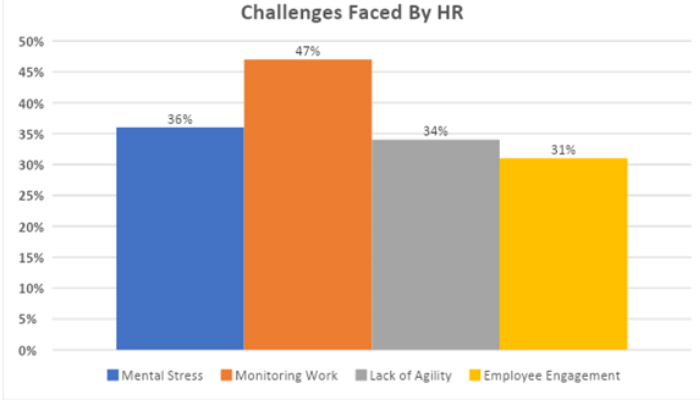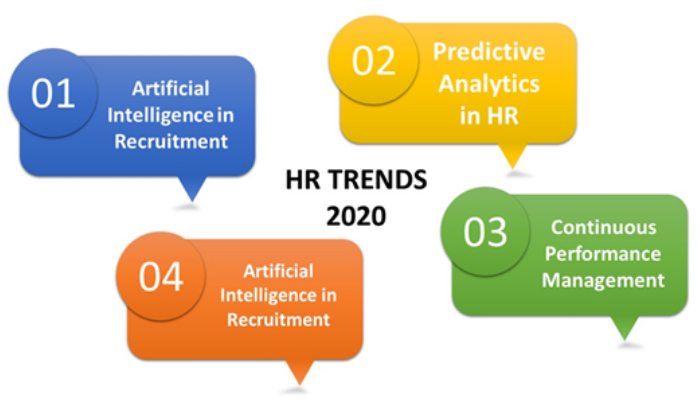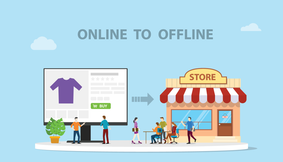Emerging trends and transformations in the future of HR

Nobody could have imagined the challenges 2020 brought. Certainly, Human Resources would also not have imagined the disruption brought by the pandemic. And even though HR professionals are doing their best to keep everyone in place and aligned, the sudden change in work culture has brought numerous challenges for HR Executives in terms of the future of work. They are in a state of dilemma - How should they respond to the crises, keep employees engaged and provide them with the right communication channels and medium for remote work?
Top Challenges Faced by HR Executives
Mental Stress and Wellbeing
Sudden change in the work culture due to COVID-19 outbreak has impacted employee health and wellbeing. Companies have been conducting wellness programs to provide employees with Health and Security Incentives and Benefits to help them overcome all health issues but COVID-19 has brought the employees’ mental stress to the driving seat.
Experts across the country have responded that the future of HR lies in addressing health issues of workers that have emerged as a major concern of today.
Monitoring Remote Work
Before the COVID-19 pandemic, less than 50% of organizations had the option to work remotely. Especially, the Financial Services segment of the industry did not encourage remote work but today, nearly all of them are looking at building new strategies that can aid remote workers.
This situation is creating many problems for HR managers and they are trying their best to build routes and strategies to overcome this challenge. Providing employees with the right working environment and gathering time to time updates is the biggest problem in the current situation.

Major HR issues at hand
Lack of Agility
Amongst others, one major issue faced by HR teams today and that will continue to exist in the near future is the lack of agility.
It has become critical to respond and act quickly because there are many approvals that need to be taken before taking any action. The process of collecting and analysing data along with that of taking immediate measures has slowed down considerably. The need of the hour is to build the right communication, become more agile in the approach, and prioritize company goals above all else.
Employee Engagement
Communicating with employees is another challenge that needs to be taken into account to find whether or the workforce is working efficiently in remote locations. Without the right channels, it is difficult to track and manage employees.
Tools like Zoom and Slack are used frequently to meet the needs of employees but this is certainly not enough to get everyone on the same page.
Emerging trends in Human Resources

Recruitment makes use of Artificial Intelligence
Artificial intelligence recruitment and HR is the future of the country. Its use is growing day by day but still, only 10% of employers are making use of AI. 36% of organizations are expected to make use of AI in the next 2 years.
AI is slowly finding its way in every part of the recruitment process starting from pre-selection, interviewing, reference check to background checks and deciding compensations.
The 6 most important uses of AI in recruitment are:
- Physical Interview Bots: Bots use natural language processing (NLP) and analytics to access candidate skills and personality. The various advantages of Physical Interview bots include getting rid of biases like age, gender and other physical characteristics and providing same interview experiences to every candidate.
- Conversational Analytics: This software auto records the interview process and automatically transcribes them. Live insights help in understanding how effective the interview process and necessary improvement required are.
- AI-Powered Background Checks: Background checks are very common and 92% of the companies conduct background checks. Using AI-powered background checking provides more privacy for employees, reduces bias and is simpler, faster and efficient.
- Automated reference checking: Reference checking tool automates the process and helps gather all the information on a single platform. Referees respond to the scientifically designed questionnaire and also get automated reminders.
- Automated Compensation Generation: AI helps in determining the right compensation and package benefits for new employees. The software takes into account all elements including Salary, Overtime Pay, Bonus and commission, Retirements and all other Health benefits.
- New Employee Onboarding: AI-Driven technology reduces the administrative burden of the onboarding process by providing 24*7 support. AI Chatbots clear all the doubts and guide candidates on various aspects of their onboarding.

Predictive Analytics in HR
According to the 2018 report by Oracle, Predictive Analytics is mainly used by HR more than any other domain, unlike finance where Analytics makes major decisions. The HR department involves many key features in any organization starting from talent acquisition, performance monitoring, upskilling to outplacements. The power of analytics makes a huge difference in every step. Predictive Analytics benefits five key areas of human resource like:
- Hire the right person: Innovators are using predictive analytics to screen through the data to determine the best candidate which can fit the existing culture. Analytics also helps in checking backgrounds and sighting strategies from huge historical data. Predictive Analytics acts as a game-changer in the hiring process for any organization.
- Increase performance and boost productivity: Predictive analytics is used by HR to keep the focus on performance, progress and slips of employees. This analytical data solves many questions like: “Who will outperform other colleagues? Who has the potential to prove further in future?” The scores of all the candidates help HRs in finding the best person for programs.
- Upskill Workforce: Predictive analytics model can be used in planning for the workforce and locating skill gaps. The ability to predict gaps and filling them with minimal lags helps in the overall development of the workforce.
- Employee engagement: Employee satisfaction has always been very hard to measure. Predictive analytics uses desperate figures and other non-numeric figures like surveys, and other feedback to offer insightful analysis to HR executives that will continue to aid them in the near future.
- Retain Top Talents: Employers invest huge amounts of resources on identifying and training them and this incurs huge costs to the company. This impacts negatively on the brand value and the circle goes on. Predictive analytics uses historical data to resolve possible attrition before it happens.
Continuous Performance Management
Continuous performance management is very popular in HR Technology by creating data dashboards and creative performance KPIs. This helps companies know how their employees are performing to come up with possible solutions to boost performance. The 3 key features of using continuous performance management are:
- Better Quality of KPI Data: As the data is collected from various sources like progress updates and social media, the data is more accurate. The results generated from isolated factors like single parameters are eliminated and helps employers identify which employee is performing in a different context.
- Deep Engagement: To strengthen the employer-employee relationship and improve communication, continuous performance management can act as a powerful tool. Employees grievances and needs should be continuously monitored instead of once a year.
- Performance Review Management: Collaborating yearly reviews at once is very cumbersome for HR departments. Continuous performance management framework analyses continuous data and gives the HR department the visibility of key data, making reviews much faster.
Future Job Training by HR
With nearly 40 million people using work from home as a regular part of their current job, companies are trying to optimize performance while ensuring that the wellbeing of its employees is not compromised. Thus, companies are making use of virtual and augmented reality to train employees to innovate for the future. The various advantages of such training are:
- More time for learning: With in-person training impossible in current situations, employees are focussed on learning new skills and practises to cope with changes in the work-life balance. Employees are now having more spare time along with an increased desire to learn new technologies. Future virtual training will be more cost-effective and scalable than the traditional face to face training.
- Increased productivity: Remote training increases productivity with flexible working hours and improved focus of the whole team.
- Adapting Learning Technologies: Using app-based learning technologies and using AR and VR based training tools can increase productivity and also maximise engagement.
- Future Learning Culture: Organizations should focus on improving business culture and improving the wellbeing of employees. Seeing the current situation, big organizations are focussed on investing more in training and upskilling with a reduced budget.
Login to continue reading
And access exclusive content, personalized recommendations, and career-boosting opportunities.
Blogs you need to hog!

What Innovation Does For Efficiency and Competitiveness in a Corporate Sector?

Online to Offline Commerce- Everything one needs to know

How Do You Work Around Branding Guidelines To Be Guidelines And Not Limitations? | Alekhya, Brand Manager- Vivel, ITC | Dove, Unilever













Comments
Add comment